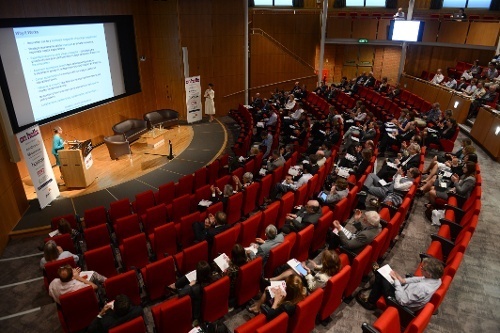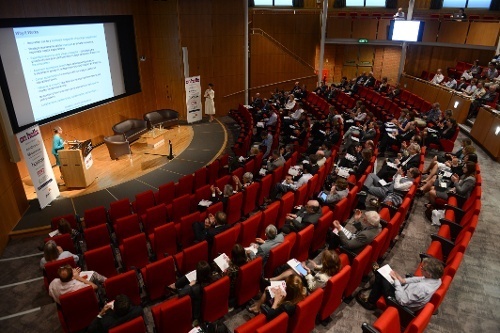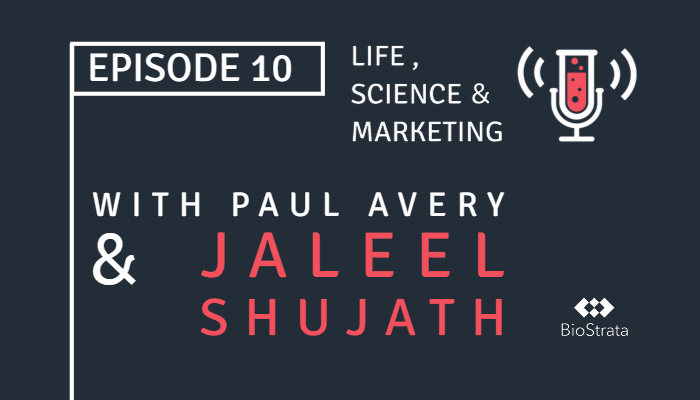One Nucleus’ 2016 ON Helix translational science event was kicked off with a bang this year, and there were a number of talks and debates to get your teeth into, as outlined in our previous blog. The opening keynote talk of the event was given by none other than Dr. Susan Windham-Bannister. Dr. Windham-Bannister is an internationally recognized innovations expert who was named as one of the 10 most influential women in biotech in 2013 by the Boston Globe.
Dr. Windham-Bannister discussed her experiences in founding the Massachusetts Life Science Centre (MLSC), in 2008 and gave her insights into how investment by local and national governments can play a role in accelerating the translation of high quality science into business. She explained that the MLSC is a quasi-independent authority that administers an investment fund created with state money, but is governed by an independent board of directors. This unique role for the government in accelerating life science innovation was the basis for the talk.

Dr. Windham-Bannister addresses the audience at ON Helix 2016
The MLSC’s mission and impact
The goal of the initiative was the investment in good quality science and business within Massachusetts, in order to grow the life sciences economy in the state and accelerate the pace of new treatments, therapies and cures becoming available to patients. The MLSC’s focus is the translation of good science into the commercial arena, recognising a broad remit of skill sets and research areas. “Innovation is a process that needs certain things at certain stages” said Windham-Bannister, and “the focus of our strategy was to invest in filling the gaps in Massachusetts that were hindering the growth of commercial life sciences.”
Funding from the MLSC is based on a competitive process. A MLSC Scientific Advisory Board, which is comprised of academicians, business leaders, and venture capitalists, reviews applications for funding and makes recommendations to the MLSC’s Board of Directors for approval. The MLSC’s business model is “bottoms up” – since applicants are competing based on which innovations within the life science sector will be most impactful, in order to direct funding that supports the growth and development within these areas. This is in contrast to most government initiatives, which are directive and “top down.”
So what has been the impact of the MLSC? Do seemingly large-scale set ups really work to catapult laboratory-born innovations into the commercial sphere? Dr. Windham-Bannister explains the enormous growth of commercial life sciences in Massachusetts since inception of the life sciences initiative. “The life science sectors supported by the initiative have grown tremendously faster in Massachusetts compared to the rest of the economy” she said. “The state now ranks #1 in the U.S. in life sciences employment per capita, and in 2013 the number of start-up companies coming out of our academic institutions led that of other major life sciences cities in the U.S. In 2007, only a few of the top biopharma companies in the world had a presence in Massachusetts. Now, 17 of these global leaders have a significant footprint in Massachusetts and several have moved their U.S. headquarters to the state.”
A gold standard
Initiatives like this can lead by example, as valuable lessons can be learned and subsequently applied to the UK’s life science sector. Dr. Windham-Bannister finished her talk by reminding delegates that this type of success can be translated across the Atlantic; “[The life sciences initiative’s strategy] is a good model for the UK” she said. The MLSC worked off a budget of just 1 billion US dollars over a 10-year period, but as mentioned by Jane Osbourn (Site Leader and VP Research and Development at MedImmune) in the closing address of the day, one lesson learned by the MLSC is that 1 billion dollars can go a long way – if spent correctly and highly leveraged with funds from the private sector. The key is creating a dialogue between the worlds of academia, industry, investors and government, in order to facilitate mutual cooperation and partnership.
ON Helix 2016 was a huge success; the coming together of expert keynote speakers with decades of experience in the field, alongside a plethora of pharmaceutical and biotechnology companies to engage in debate, produced a day of real value. The date for next year’s event is set at 13th July 2017, we hope to see you there!




